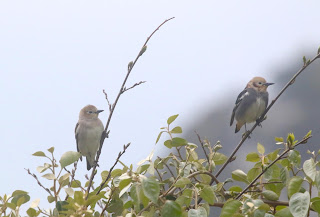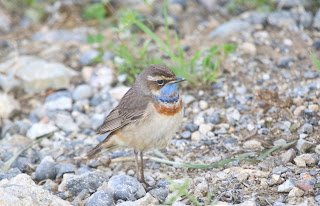 |
| Little Whimbrel Numenius minutus |
 |
| Black-tailed Godwit Limosa melanuroides |
 |
| Yellow-browed Bunting Emberiza chrysophrys |
 |
| Oriental Dollarbird Eurystomus orientalis |
 |
| Mugimaki Flycatcher Ficedula mugimaki |
 |
| Siberian Weasel Mustela sibirica |
I logged 88 species over eight hours, with seven new species noted: a breeding-plumaged Little Grebe in the harbour, a probable Ruddy-breasted Crake (quick views in a ditch near the dump, all clues point to this species), two Black-tailed Godwits at the mossy slab and another in 2-Gu, two Oriental Scops Owls calling from the hills on the way to 2-Gu, two quick looks at a lark that was possibly a Greater Short-toed Lark, a Mugimaki Flycatcher (love that name) near the power plant, and two Grey-capped Greenfinch at the pass.
Nothing crazy in 2-Gu, besides an interesting variety of turdus thrushes, and loads of the most predominant migrants seen throughout my sojourn on Gageo – Olive-backed Pipits and Black-faced Buntings.
Other interesting sights included four Striated Herons, at least four restless Chinese Pond Herons on the road up to the pass, three Japanese Quail in 2-Gu, a Little Whimbrel still around the dump, and an Oriental Dollarbird on the road to 2-Gu.














































